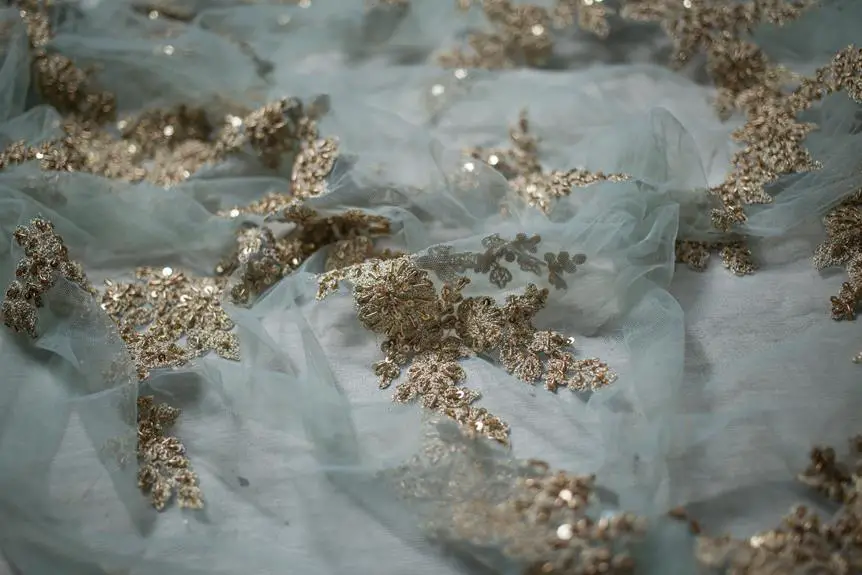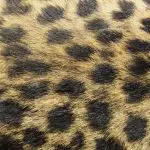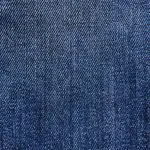When it comes to delicate fabrics, choosing the best lace glue is like finding a needle in a haystack. But fear not, as we've got you covered with expert advice on selecting the perfect adhesive for your delicate fabrics.
From sheer lace to intricate embroidery, you want a glue that will keep everything in place without causing damage. In this guide, we'll explore the factors to consider when choosing lace glue, the different types suitable for delicate fabrics, application techniques, and best practices to ensure a flawless result.
Mastering the art of using lace glue on delicate fabrics is within your reach, and we're here to help you achieve it.
Key Takeaways
- Compatibility with fabric is crucial to avoid damage or discoloration.
- Consider the durability of the lace glue to ensure it can withstand wear and tear.
- Ease of use is important for easy application and repositioning.
- The lace glue should provide a strong bond without being difficult to work with.
Factors to Consider When Choosing Lace Glue
When choosing lace glue for delicate fabrics, it's important to consider how it will interact with the specific material of the fabric. Factors such as compatibility and durability considerations play a crucial role in determining the best lace glue for your delicate fabrics.
Compatibility refers to how well the glue adheres to the fabric without causing any damage or discoloration. You want a glue that will seamlessly blend with the delicate fabric without leaving any visible residue or marks.
Durability considerations are also essential. You need a lace glue that can withstand the wear and tear that comes with delicate fabrics. The glue should be able to maintain its adhesion through various conditions such as movement and potential exposure to moisture.
Ease of use is another factor to keep in mind. The best lace glue for delicate fabrics should be user-friendly, allowing for easy application and repositioning if needed. A good lace glue should provide a strong bond without being difficult to work with.
Considering these factors will help you choose a lace glue that's best suited for delicate fabrics, ensuring a secure and long-lasting bond while maintaining the integrity of the fabric.
Types of Lace Glue for Delicate Fabrics
For delicate fabrics, you'll want to consider both the type of adhesive and the method of application when choosing lace glue. Proper adhesion and material compatibility are crucial factors to keep in mind. There are different types of lace glue available, each with its own characteristics and best uses. Here are three common types of lace glue to consider:
| Type of Lace Glue | Characteristics | Best Uses |
|---|---|---|
| Water-based | Dries clear, easy to clean | Ideal for delicate laces and fabrics |
| Solvent-based | Strong bond, quick drying | Suitable for heavier fabrics and extended wear |
| Silicone-based | Flexible, waterproof | Great for outdoor events and long-lasting hold |
When choosing a lace glue for delicate fabrics, it's essential to select one that provides the right level of adhesion without causing damage. Water-based adhesives are often a safe choice due to their gentle nature and compatibility with delicate materials. However, solvent-based glues offer a strong bond for more substantial fabrics, while silicone-based options provide flexibility and waterproofing. Understanding the characteristics and best uses of each type can help you make an informed decision based on your specific needs.
Application Techniques for Lace Glue
When applying lace glue to delicate fabrics, it's crucial to protect the material while ensuring a secure adhesion. By using the right application techniques, you can prevent damage and maintain the integrity of the fabric.
Let's explore some effective methods to achieve a flawless and long-lasting bond between the lace and delicate fabrics.
Protecting Delicate Fabrics
To ensure the best results, apply the lace glue gently and evenly onto the delicate fabric, starting from the center and working your way outwards. When working with delicate fabrics, it's crucial to protect them from any potential damage during the application process.
Here are some tips to help you safeguard delicate fabrics when using lace glue:
- Test a small, inconspicuous area of the fabric to ensure lace glue compatibility and to assess its adhesive strength.
- Use a light hand and gentle pressure when applying the lace glue to delicate materials to minimize the risk of damage.
- Consider using a protective barrier, such as a piece of wax paper or a fabric interfacing, between the delicate fabric and the lace glue to provide an extra layer of protection.
These techniques will help you preserve the integrity of delicate fabrics while achieving a secure and aesthetically pleasing bond with the lace glue.
Ensuring Secure Adhesion
Ensuring secure adhesion with lace glue involves gently pressing the lace onto the fabric to create a strong and long-lasting bond. Proper application techniques are crucial in achieving a secure hold that lasts. Here are some tips to ensure a long-lasting hold when applying lace glue:
| Proper Application Techniques | Long-Lasting Hold |
|---|---|
| Clean the fabric surface thoroughly before applying the glue | Ensures the glue adheres to the fabric properly |
| Apply a thin, even layer of glue on the fabric and lace | Prevents clumping and ensures uniform adhesion |
| Allow the glue to become tacky before pressing the lace onto the fabric | Enhances the bond and prevents shifting |
| Press the lace firmly onto the fabric, starting from the center and working outwards | Ensures full contact and minimizes air bubbles |
| Allow the glue to dry completely before handling the fabric | Ensures a strong and durable bond |
Tips for Removing Lace Glue From Delicate Fabrics
To delicately remove lace glue from fabrics, begin by gently dabbing a small amount of oily makeup remover onto the affected area. Let it sit for a few minutes to soften the glue, then carefully peel off the lace, taking care not to damage the fabric.
Here are some additional tips to help you effectively remove lace glue from delicate fabrics:
- Use a cotton swab dipped in rubbing alcohol to gently dab at any remaining glue residue.
- Once the glue is completely removed, wash the fabric with a gentle detergent to remove any oily residue and restore the fabric's natural texture.
- Allow the fabric to air dry or gently pat it with a clean towel to remove excess moisture, then lay it flat to dry to avoid stretching or misshaping the delicate fibers.
Best Practices for Using Lace Glue on Delicate Fabrics
When using lace glue on delicate fabrics, it is essential to apply a small amount evenly and allow it to dry completely before attaching the lace. Start by ensuring the fabric is clean and dry before applying the glue. Test a small amount of glue on a hidden area of the fabric to check for any adverse reactions or staining. Once confirmed, gently dab a small quantity of lace glue onto the fabric using a cotton swab or a small brush, ensuring it is spread evenly. Allow the glue to dry completely before attaching the lace to prevent any wrinkling or shifting of the delicate fabric.
| Best Practices for Using Lace Glue on Delicate Fabrics | |
|---|---|
| Fabric Preparation | Ensure the fabric is clean and dry before application. |
| Application | Apply a small amount of glue evenly and allow it to dry completely. |
| Gentle Removal & Aftercare | Gently remove the lace, then hand wash and air dry the fabric. |
Common Mistakes to Avoid When Using Lace Glue
You should avoid using too much lace glue on delicate fabrics, as it can lead to visible residue and potential damage to the material. To ensure that you're using lace glue correctly, here are some common mistakes to avoid:
- Using too much glue: Applying an excessive amount of glue can seep through delicate fabrics, causing stains and potentially damaging the material.
- Neglecting proper removal techniques: Failing to use the appropriate removal methods can result in tearing or stretching of the delicate fabric, leading to irreversible damage.
- Not testing on a small area first: Skipping the step of testing the glue on a small, inconspicuous area of the fabric can be a costly mistake if the glue reacts negatively with the material.
When using lace glue, it's crucial to be mindful of these common mistakes to ensure that delicate fabrics remain undamaged. Remember to always follow proper removal techniques to prevent any harm to the material.
Frequently Asked Questions
Can Lace Glue Be Used on Delicate Fabrics Like Silk or Chiffon?
Yes, lace glue can be used on delicate fabrics like silk or chiffon. When applying, take precautions to ensure compatibility and durability. It's essential to follow proper guidelines for lace glue application on delicate fabrics to avoid damage.
Is Lace Glue Suitable for Attaching Delicate Lace Trim to Wedding Dresses or Evening Gowns?
Applying lace glue to delicate fabrics like silk or chiffon requires extra care. It's suitable for attaching lace trim to wedding dresses or evening gowns. Ensure compatibility by testing a small, inconspicuous area first.
How Long Does Lace Glue Typically Last on Delicate Fabrics?
Lace glue typically lasts on delicate fabrics for several hours to a few days, depending on the application techniques and environmental factors. To enhance longevity, ensure a clean, dry surface and apply a thin, even layer of glue.
Can Lace Glue Be Easily Washed Out of Delicate Fabrics Without Causing Damage?
When washing delicate fabrics, it's important to use gentle techniques to prevent damage. Lace glue can be removed from delicate fabrics by using mild detergent and cold water. Always check fabric compatibility before attempting to wash.
Are There Any Specific Precautions to Take When Using Lace Glue on Delicate Fabrics to Prevent Damage or Discoloration?
When using lace glue on delicate fabrics, take precautions to avoid damage or discoloration. Proper application techniques, such as using a small amount and testing on a small area first, can help prevent issues.
- Understanding China’s Role in Global PCB and Assembly Fabrication - June 20, 2025
- Navigating the Zhongda Fabric and Accessories Center in Guangzhou - June 20, 2025
- How to Find and Partner With Fabric Exporters in China - June 20, 2025






